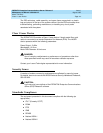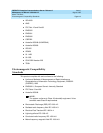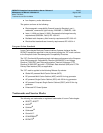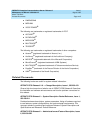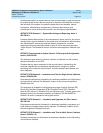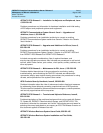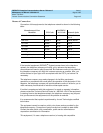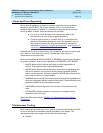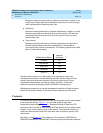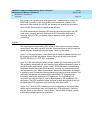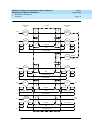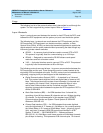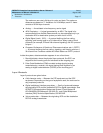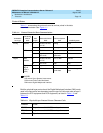
Maintenance Architecture
Page 1-1Maintenance Objects
1
DEFINITY Enterprise Communications Server Release 6
Maintenance for R6vs/si
555-230-127
Issue 1
August 1997
1
1
Maintenance Architecture
The maintenance subsystem is a part of the software that initializes and
maintains the system. The software continuously monitors system health, and
keeps a record of errors detected in the system. The maintenance subsystem
also provides a user interface for on-demand testing.
This chapter provides a brief description of the Release 5 maintenance strategy
and the background information on the system’s overall functions. For detailed
descriptions of components and subsystems, refer to related topics in Chapter
10, ‘‘Maintenance Object Repair Procedures’’.
Maintenance Objects
The system is partitioned into separate entities called Maintenance Objects
(MOs). Each MO is referred to by an upper-case, mnemonic-like name that
serves as an abbreviation for the MO. For example, “CO-TRK” stands for “Central
Office TRunK”. Each MO is monitored by the system and has its own
maintenance strategy. Most MOs are individual circuit packs. Some MOs are
hardware components that reside on part of a circuit pack. For example, the
TDM bus Clock circuits reside on the Tone/Clock circuit pack. Other MOs, such
as cabinet environmental sensors, represent larger subsystems or sets of
monitors. Finally, some MOs, such as SYNChronization, represent processes or a
combination of processes and hardware.
“Maintenance names” are recorded in the error and alarm logs. Individual copies
of an MO are assigned an address that defines the MO’s physical location in the
system. These locations display as the “PORT” field in the alarm and error logs
and as output of various commands such as test board, busy tdm-bus, and so
forth.



